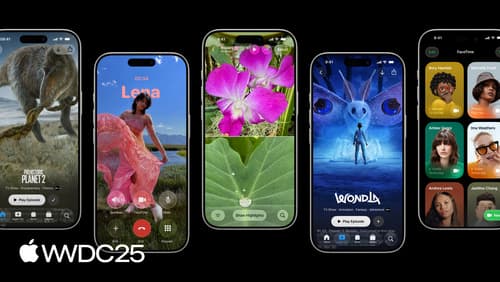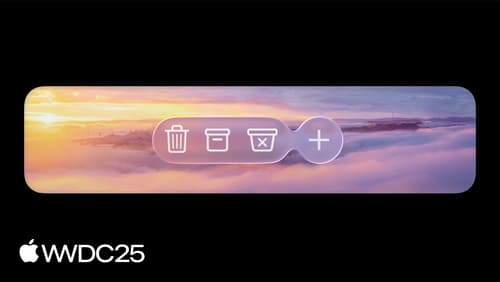Why glass?
Asked on 2025-06-12
1 search
The use of glass, particularly in the context of Apple's design system, is to create a distinct visual and functional layer that enhances clarity and contrast. Glass elements, such as those used in visionOS widgets and Liquid Glass, provide visual separation between the foreground and background, allowing key content to remain sharp and legible regardless of ambient lighting. This is especially useful for information-rich interfaces where clarity is paramount.
In the session Design widgets for visionOS, glass is described as emphasizing clarity and contrast, with foreground elements shown in full color, unaffected by ambient lighting. This helps maintain the sharpness and legibility of key content throughout the day.
Liquid Glass, as discussed in the session Meet Liquid Glass, is designed to be an interactive layer that floats above content, providing a dynamic and fluid interaction experience. It adapts to its context, changing appearance to suit the brightness of the content behind it, and introduces a unified design language across platforms.
Overall, glass is used to enhance the user interface by providing a clear, dynamic, and visually appealing way to present information and controls, while maintaining a connection to the physical world through its optical qualities.

Design widgets for visionOS
Learn how you can design beautiful widgets for visionOS 26 that blend effortlessly into someone’s surroundings. Discover how you can add depth to your widget design and customize materials, sizes, and styles for spatial computing. We’ll share how to adapt your existing widgets for visionOS, or design new widgets that feel like real objects.

Build a UIKit app with the new design
Update your UIKit app to take full advantage of the new design system. We’ll dive into key changes to tab views, split views, bars, presentations, search, and controls, and show you how to use Liquid Glass in your custom UI. To get the most out of this video, we recommend first watching “Get to know the new design system” for general design guidance.

Build an AppKit app with the new design
Update your AppKit app to take full advantage of the new design system. We’ll dive into key changes to tab views, split views, bars, presentations, search, and controls, and show you how to use Liquid Glass in your custom UI. To get the most out of this video, we recommend first watching “Get to know the new design system” for general design guidance.
